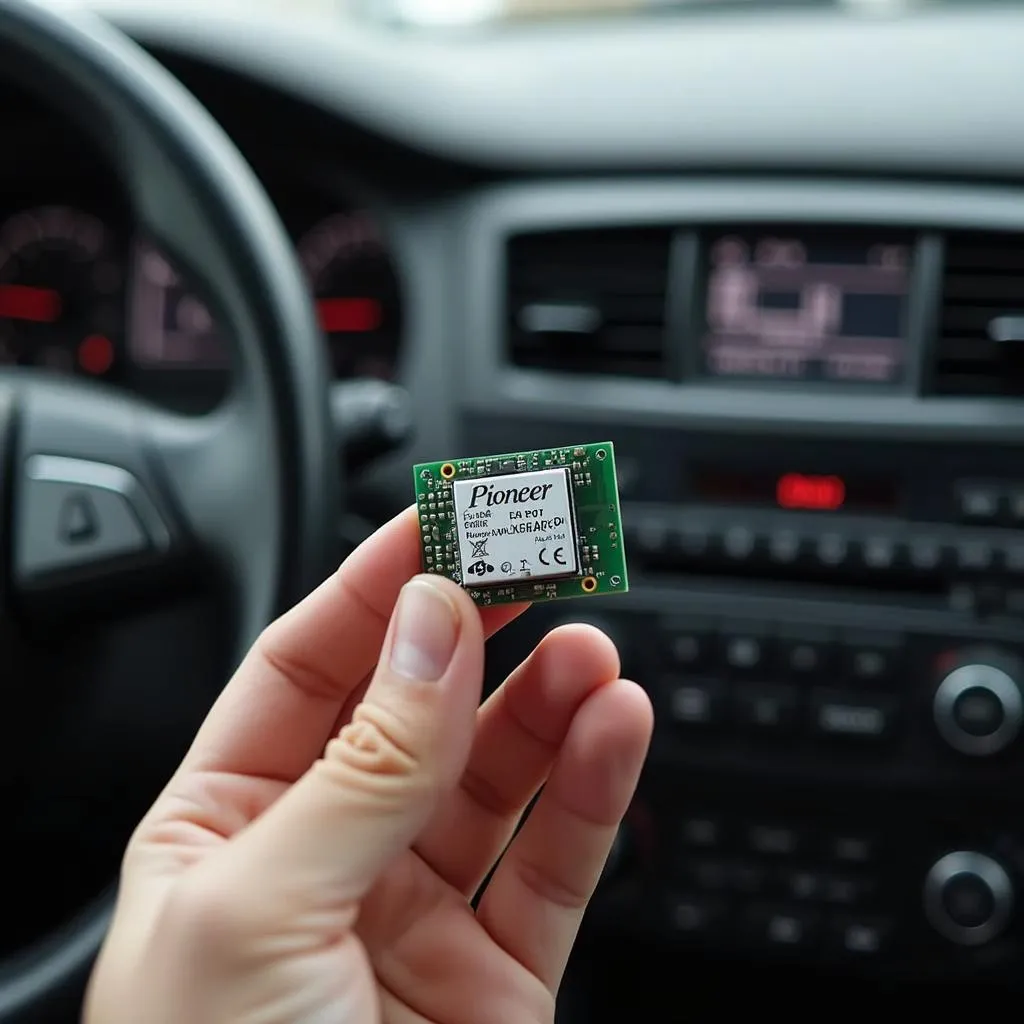Seeing the check engine light illuminate after a simple battery change can be frustrating. It can seem like a minor task like swapping out a dead battery shouldn’t trigger such a warning, but several factors can cause this. This article will delve into why your check engine light might be on after changing the battery, how to diagnose the problem, and what solutions you can implement.
 Check Engine Light Illuminated After Battery Replacement
Check Engine Light Illuminated After Battery Replacement
Loose or corroded battery terminals can disrupt the electrical connection, causing voltage fluctuations that trigger the check engine light. Sometimes, the simple act of disconnecting and reconnecting the battery can jostle loose connections and reveal pre-existing issues. how to change the battery in a kia key fob
Why is My Check Engine Light On After a Battery Change?
The check engine light is your car’s way of communicating a potential problem within its complex systems. While a battery change might seem unrelated, it can indirectly affect various sensors and modules.
Common Causes for an Illuminated Check Engine Light After Battery Replacement
- Loose Battery Terminals: A poorly secured connection can cause voltage fluctuations, leading the car’s computer (ECU) to misinterpret signals.
- Low System Voltage: If the new battery isn’t fully charged, it may not provide enough power, triggering the check engine light.
- Tripped Sensors: Disconnecting the battery can temporarily disrupt sensor readings, causing the ECU to store a fault code.
- Underlying Issues: Sometimes, the battery change merely coincides with an unrelated mechanical or electrical problem that’s just now being detected.
- Damaged Components: In rare cases, improper handling during the battery change process can damage components within the electrical system.
Diagnosing the Problem
Determining the root cause requires a systematic approach. Start by visually inspecting the battery terminals for corrosion or looseness.
How to Troubleshoot a Check Engine Light Related to Battery Replacement
- Check Battery Terminals: Ensure they are clean, tight, and free from corrosion.
- Verify Battery Voltage: Use a multimeter to check if the battery is adequately charged.
- Retrieve Diagnostic Trouble Codes (DTCs): Use an OBD-II scanner to read the specific fault codes stored in the ECU. This will pinpoint the source of the problem.
“A proper diagnosis is paramount,” says automotive electrical specialist, David Miller. “Guesswork can lead to unnecessary repairs. Using an OBD-II scanner is the most effective way to pinpoint the issue.”
Resolving the Check Engine Light Issue
Once you have identified the problem, the appropriate solution can be applied.
Fixes for a Check Engine Light After Battery Replacement
- Tighten/Clean Battery Terminals: Clean any corrosion and ensure the terminals are securely fastened.
- Charge the Battery: If the voltage is low, charge the battery to its recommended level.
- Clear the Codes: After addressing the issue, clear the stored fault codes using an OBD-II scanner.
- Address Underlying Issues: If the codes indicate a more significant problem, consult a qualified mechanic for further diagnosis and repair.
When to Seek Professional Help
If you are uncomfortable working with car electrics or if the problem persists after basic troubleshooting, it is best to consult a qualified technician.
Knowing When to Take Your Car to a Mechanic
- Persistent Check Engine Light: If the light remains on after clearing codes and checking connections.
- Multiple Error Codes: If the OBD-II scanner reveals numerous unrelated fault codes.
- Unusual Car Behavior: If your car experiences performance issues, such as stalling or rough idling.
“Sometimes, the check engine light indicates a complex issue requiring specialized tools and knowledge,” advises automotive engineer, Sarah Chen. “Don’t hesitate to seek professional assistance if needed.”
Conclusion
A check engine light after changing your battery can be a simple fix or a sign of a larger issue. By understanding the potential causes and following the diagnostic steps outlined above, you can often resolve the problem yourself. However, remember that seeking professional help is always a good option if you’re unsure about anything or the check engine light stubbornly remains on.
FAQ
-
Can a dead battery cause the check engine light to come on? Not directly, but a dying battery can cause voltage fluctuations that trigger the light.
-
Will disconnecting the battery reset the check engine light? It can temporarily turn off the light, but if the underlying issue persists, the light will return.
-
How long does the check engine light stay on after disconnecting the battery? It varies depending on the car’s make and model but usually takes several driving cycles.
-
Is it safe to drive with the check engine light on? It depends on the severity of the problem. It’s best to diagnose the issue promptly.
-
Can I clear the check engine light myself? Yes, you can use an OBD-II scanner to clear the codes after addressing the underlying problem.
-
Why is my check engine light flashing? A flashing check engine light usually indicates a serious problem requiring immediate attention.
-
What if the check engine light comes on after changing the battery and the car won’t start? This could be due to a loose connection or a faulty new battery. Check the battery terminals and voltage.

